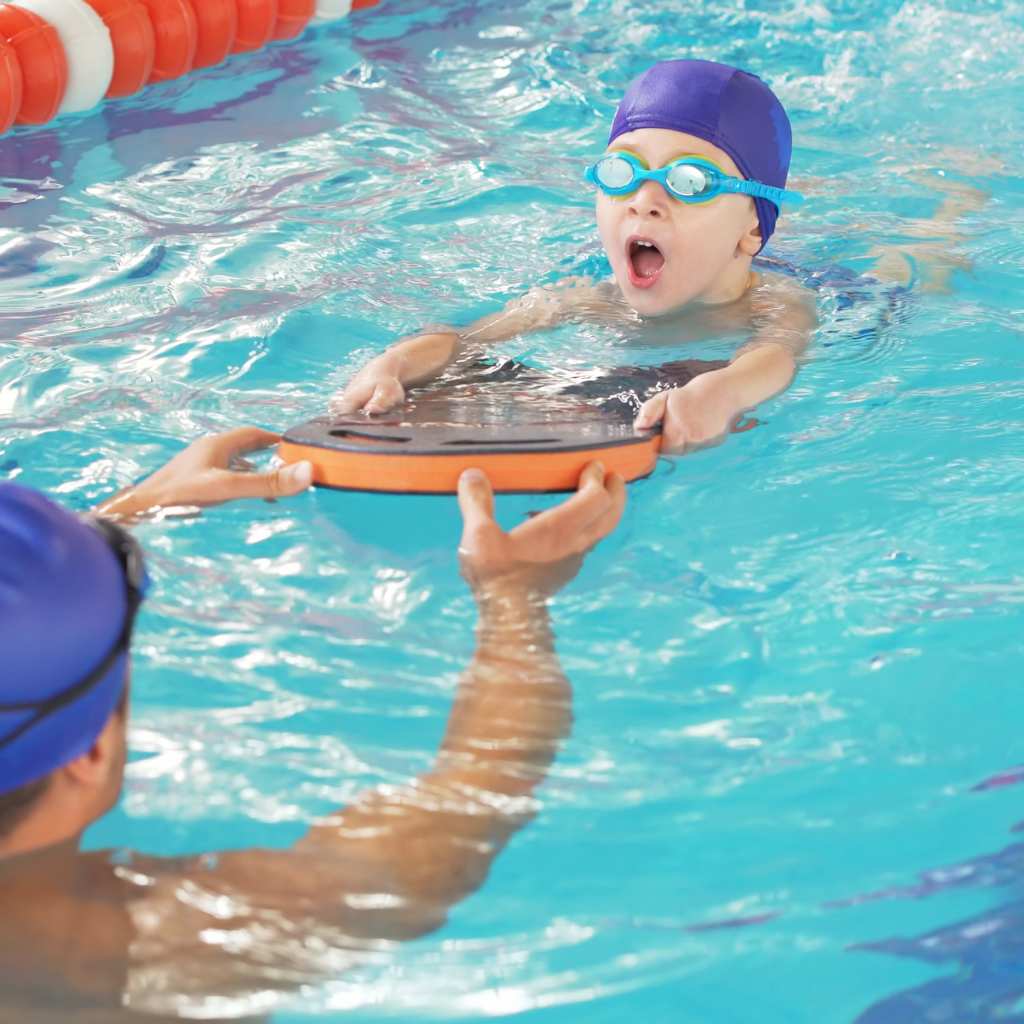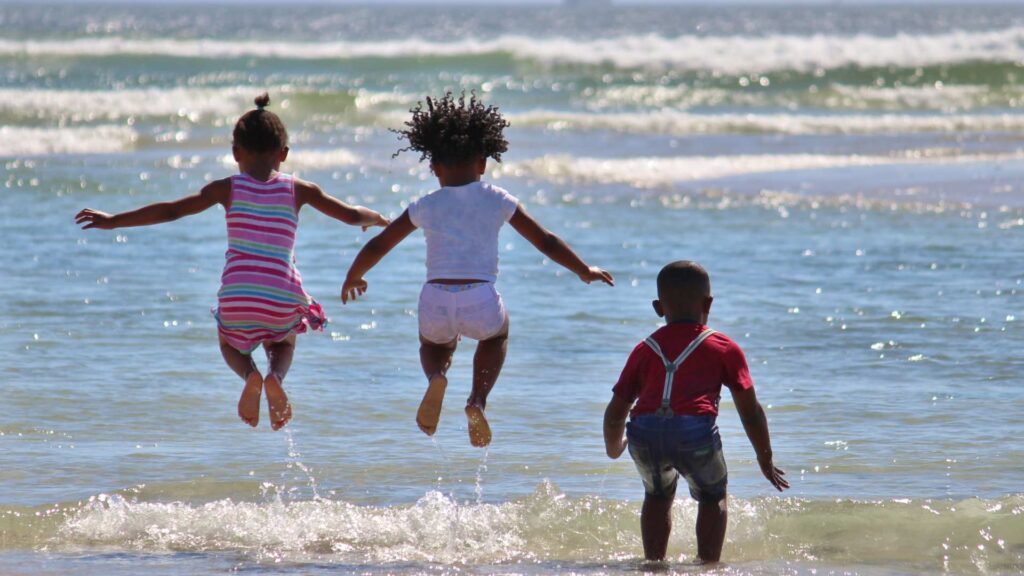Table of Contents
What water safety skills can I teach to my kid with ASD?
As a parent or caregiver of a child with autism, your top priority is their safety and well-being. However, certain risks can be challenging to anticipate and may occur even in the most attentive environments. Recently, the tragic story of a 4-year-old girl with autism who was found unresponsive in a neighbor’s pool after wandering away reminded many of us of the unique vulnerabilities children with autism spectrum disorder (ASD) face around water and how important it is to apply water safety in autism.
Accidental drownings are one of the leading causes of death for children with autism, according to the National Library of Medicine. These heartbreaking incidents serve as a reminder of the importance of water safety and proactive measures that not just parents but everyone should consider.
In this guide by ABA Centers of Georgia, we will explore why children with autism are at higher risk and what steps we can take to protect our loved ones.
Why Are Children with Autism at Higher Risk?
Children with autism often exhibit certain behaviors that increase their vulnerability around water. Understanding these behaviors is the first step in preventing accidents:
Wandering or Elopement

One of the most common risks associated with autism is wandering or “elopement.” Many children with autism may leave a safe environment without warning, drawn by curiosity or a specific interest. Bodies of water, like pools, lakes, or even fountains, can be beautiful to them due to their sensory properties—the sound, the movement, and the incredible feeling of water.
But unfortunately, this wandering behavior is one of the factors that lead to fatal accidents in autism. Between 2011 and 2016, the National Autism Association tracked missing person cases involving individuals with Autism Spectrum Disorder (ASD) who wandered away from safe settings in the U.S. Out of 808 cases, 17% resulted in death, with most caused by accidental drowning (71%), and 13% needed medical attention.
Difficulty Recognizing Danger
Children with autism face unique challenges when it comes to understanding and recognizing danger. For some, it may be difficult to perceive what constitutes a risky situation. This situation can happen not only with water but also in everyday environments, such as crossing the street to get closer to an interesting object like a traffic sign without understanding the potential danger of oncoming traffic.
Communication Barriers
Quick communication is critical in emergencies. Unfortunately, children with ASD often face challenges with communication, whether some individuals are nonverbal or find it difficult to express themselves through facial expressions, hand gestures, or eye contact, making it more difficult for them to express fear, discomfort, or the need for help.
Difficulty with Social Cues and Boundaries
Many children with autism may not recognize or understand social boundaries or safety warnings. They may not realize that a “No Swimming” sign or a fence around a pool means they need to stay away.
5 Steps You Can Take to Protect Your Child
While the risks are accurate, there are several proactive steps you can take to reduce the likelihood of an accident and ensure your child stays safe around water.
1. Enroll in Specialized Swimming Lessons: One of the most effective ways to protect your child is to ensure they are comfortable and familiar with water. Look for swimming lessons specifically tailored to children with autism. These programs often account for sensory sensitivities and communication challenges, using visual aids and repetition to help children learn vital water safety skills.

In these lessons, children learn not only how to swim but also how to respond in dangerous situations, such as floating on their backs if they feel overwhelmed. The goal is to give them a level of independence while reducing the risk of panic or drowning.
2. Supervise Closely and Designate a ‘Water Watcher’: Remember to never leave your child unsupervised near any body of water, even for a brief moment. Whether you’re at a pool, beach, or lake, always assign a designated “water watcher” whose sole responsibility is to keep an eye on the children. This measure ensures that someone will always be watching the kids, even during social gatherings when distractions are common.
3. Pool Safety: If you have a pool, consider installing safety features like pool covers, fences, and door alarms to prevent accidental access. Additionally, drain small bodies of water, like kiddie pools, when not in use.
4. Create Visual Supports and Use Social Stories: Children with autism often respond well to visual supports and stories, which help them understand what to expect in certain situations. In addition, create a social story that explains the rules of water safety in simple, straightforward terms, using pictures and positive language.
For example, a social story might walk through the steps of putting on a life jacket, waiting for an adult before entering the pool, and how to signal for help if they feel unsafe. Reinforce these stories through practice, with positive reinforcements and repetition, to build familiarity and understanding.
5. Address Sensory Sensitivities: Some children with autism may have heightened sensory sensitivities, which can make them hesitant or fearful of water activities. To help them acclimate, start slow by allowing them to play with water in a controlled environment, like a bathtub or shallow kiddie pool.
Moreover, be mindful of other sensory triggers that might cause your child to run or wander. Identifying these triggers and implementing strategies to minimize their impact can go a long way in preventing accidents.
Educating Your Community

When it comes to keeping your loved one with ASD safe from potentially risky situations, it’s crucial to involve family members, neighbors, teachers, and others in your community. This collective effort will help identify possible hazards and ensure a safer environment.
For instance, if you live near pools or ponds, have an open conversation with your neighborhood about your child’s needs and the risks associated with wandering. Ask them to keep their pool gates locked and to let you know if they see your child unsupervised near water.
In addition, consider reaching out to your child’s school and other community organizations. Teachers and staff who work with your child can help reinforce water safety rules and monitor behaviors that could lead to dangerous situations. You can also work together to create safety plans or visual aids to remind your child of the importance of caution around water.
ABA Therapy: A Personalized Approach for Every Child
As a parent of a child with autism, it’s natural to want the best tools and strategies to keep them safe and help them thrive. Sometimes, though, it can feel overwhelming, and that’s where ABA (Applied Behavior Analysis) therapy can offer extra guidance and support. ABA programs meet the unique needs of each individual, regardless of where they fall on the spectrum, helping kids, teens, and parents navigate challenging behaviors while introducing positive ones.
The core principle of ABA is the developing of essential skills—like how to communicate effectively, develop protective behaviors, and understand safety cues—all tailored to your child’s abilities and preferences. Whether it’s learning to ask for help, identifying when they’re in danger, or building positive routines, ABA offers a structured yet flexible approach.
ABA Centers of Georgia: Empowering Children with ASD
Water should be a source of joy, not fear. With the proper precautions, children with autism can safely experience its calming and fun aspects, gaining confidence and skills along the way.
At ABA Centers of Georgia, we help families in Alpharetta, Atlanta, Buckhead, and Marietta develop personalized strategies to keep their children safe. From early interventions to targeted ABA therapies, we work with you to ensure your child thrives in every aspect of life.
Call us at (855) 929-5058 or schedule a free consultation today to learn more about how we can help your family build a safe, nurturing environment for your child.









